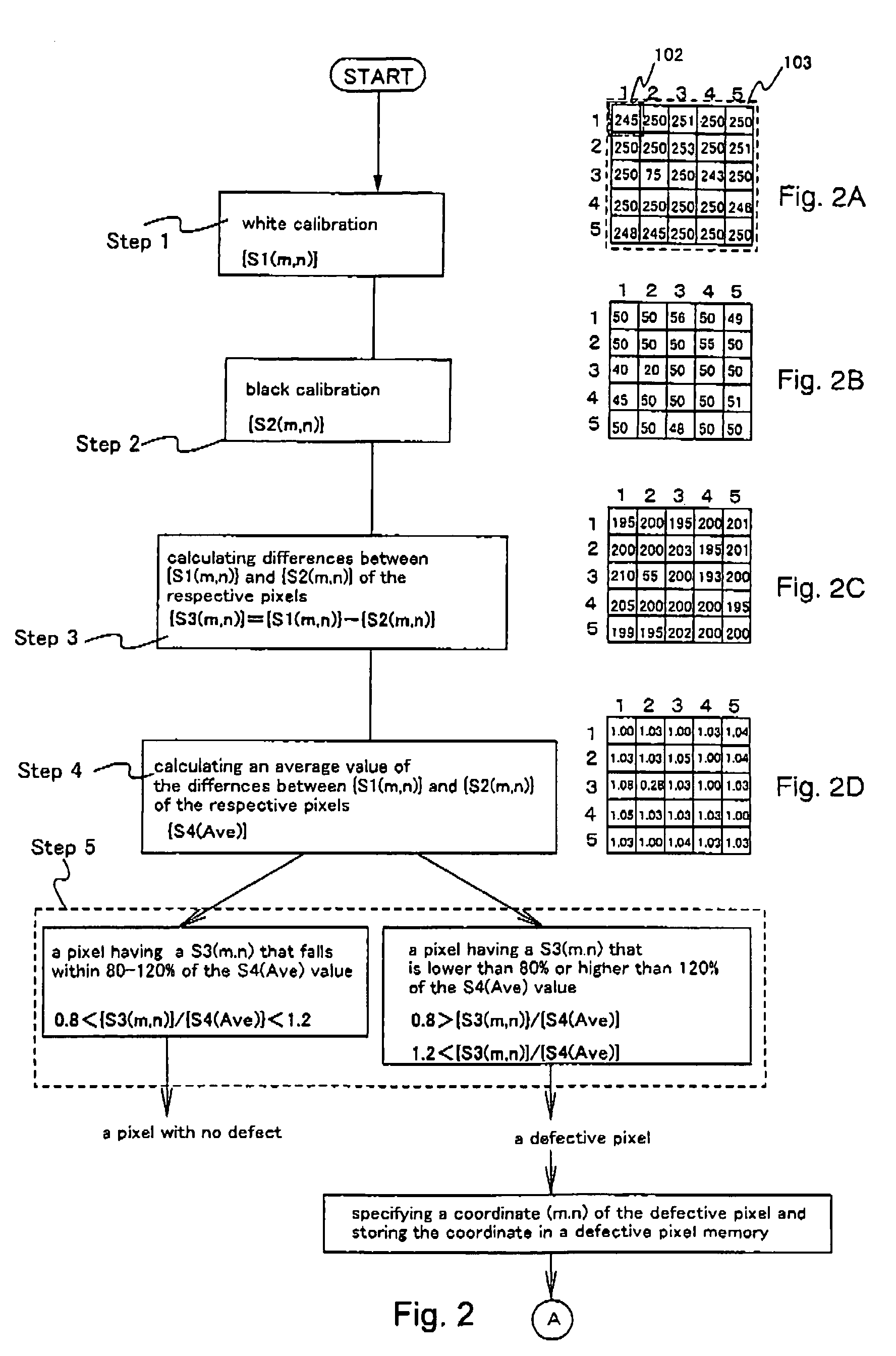Defective pixel specifying method, defective pixel specifying system, image correcting method, and image correcting system
- Summary
- Abstract
- Description
- Claims
- Application Information
AI Technical Summary
Benefits of technology
Problems solved by technology
Method used
Image
Examples
embodiment mode 1
[0058]This embodiment mode describes means for determining whether there is a defective pixel and means for specifying the coordinate of the defective pixel in a defective pixel specifying method of the present invention. The description is given with reference to the flowchart of FIG. 2.
[0059]First, whether or not a pixel portion of a semiconductor device has a defective pixel is determined. The pixel portion reads at least two calibration sheets of different colors to decide. In general, a color is defined by three components; hue (corresponding to the wavelength of a single color light), chroma (vividness, namely, how small the proportion of white is), and brightness (the intensity of light). In this specification, a color may have merely one component or arbitrarily-selected two components out of the above three components. Step 1 of this embodiment consists of reading a white calibration sheet and Step 2 consists of reading a black calibration sheet. Step 3 involves obtaining t...
embodiment mode 2
[0072]This embodiment mode describes means for setting an image signal of a defective pixel in an image correcting method of the present invention. The description is given with reference to FIGS. 3A to 3C.
[0073]As shown in FIG. 3A, after the coordinate of a defective pixel 101 is specified and is stored in a defective pixel coordinate memory, an image signal of the defective pixel 101 is set based on image signals of pixels adjacent to the defective pixel.
[0074]FIG. 3B shows a case in which a semiconductor device reads information of a subject in monochrome and displays a monochromatic image of the subject. If the coordinate of the defective pixel 101 is given as (m, n), pixels adjacent to the defective pixel 101 are pixels (m, n±1), pixels (m±1, n±1), and pixels (m±1, n), which are eight pixels in total. An image signal of the defective pixel is set based on image signals of these eight adjacent pixels. To elaborate, the average value of image signals of the pixels (m, n±1), pixel...
embodiment mode 3
[0083]This embodiment mode describes the relation between a pixel portion with a plurality of pixels each having a photoelectric conversion element and a display device for displaying an image of a subject read by the pixel portion. The description is given with reference to FIG. 4.
[0084]In FIG. 4, a pixel portion 200 is provided with a photoelectric conversion element having a reading function. Information of a subject read by the pixel portion 200 is outputted to a defective pixel repairing system. In this embodiment mode, a defective pixel specifying system and an image correcting system are collectively called a defective pixel repairing system.
[0085]The defective pixel repairing system has a CPU 202, an image signal repairing circuit 203, and a defective pixel coordinate memory 204. The defective pixel repairing system of the present invention has means for determining whether there is a defective pixel in the pixel portion through calibration and for specifying the coordinate ...
PUM
 Login to View More
Login to View More Abstract
Description
Claims
Application Information
 Login to View More
Login to View More - R&D
- Intellectual Property
- Life Sciences
- Materials
- Tech Scout
- Unparalleled Data Quality
- Higher Quality Content
- 60% Fewer Hallucinations
Browse by: Latest US Patents, China's latest patents, Technical Efficacy Thesaurus, Application Domain, Technology Topic, Popular Technical Reports.
© 2025 PatSnap. All rights reserved.Legal|Privacy policy|Modern Slavery Act Transparency Statement|Sitemap|About US| Contact US: help@patsnap.com



